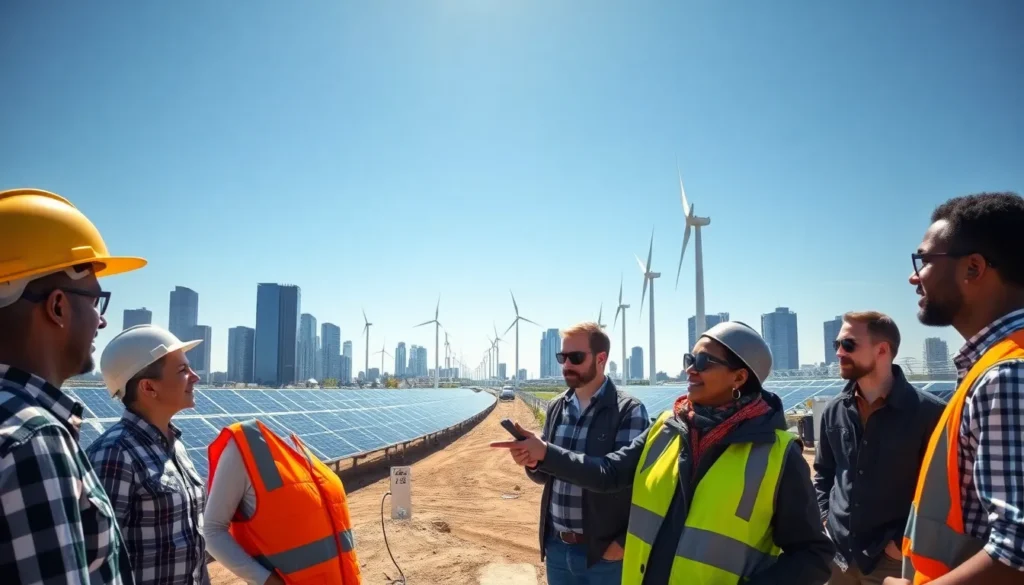Table of Contents
ToggleIn the rapidly changing landscape of global energy politics, staying informed about the latest developments is crucial. As nations grapple with the complexities of energy resources, climate change, and technological advancements, the focus on energy strategies intensifies. This article delves into recent global developments, innovations, and future trends, offering a comprehensive overview of the state of energy politics worldwide.
Recent Global Developments in Energy Politics

The global energy sector is experiencing seismic shifts driven by a combination of policy changes and international agreements. As countries strive to secure energy independence while addressing climate challenges, several key developments have emerged.
Key Energy Agreements and Their Implications
In recent months, major players in the energy sector have entered into significant agreements aimed at enhancing cooperation and stability. One notable example is the global push for carbon neutrality by 2050, which has seen nations like the United States and European Union reinforcing their commitments through treaties and partnerships. These agreements not only aim to reduce emissions but also affect trade relationships, as countries with abundant renewable resources are positioned to become energy exporters.
Shifts in Renewable Energy Policies
Governments worldwide are adapting their energy policies to reflect a commitment to renewables. Countries such as China and Germany are ramping up investments in solar and wind energy projects. The recent policy shift in India, targeting a 50% reduction in coal dependency by 2030, signifies a broader trend toward sustainable energy solutions. These changes signal a transitional period for many economies as they seek to balance energy demands with environmental responsibilities.
Innovations in Energy Technologies
Technological advancements play a pivotal role in shaping the energy landscape. This section explores groundbreaking innovations that are transforming the way energy is produced, consumed, and managed.
Breakthroughs in Clean Energy Solutions
The last year has witnessed remarkable breakthroughs in clean energy technologies, particularly in solar and wind efficiency. Innovations such as perovskite solar cells and floating wind farms are on the rise, significantly increasing energy output while reducing costs. These developments have not only made clean energy more accessible but have also encouraged nations to update their energy infrastructures.
The Rise of Electric Vehicles
The electric vehicle (EV) market continues to grow at an exponential rate. With companies like Tesla leading the charge, advancements in battery technology have extended vehicle range and reduced charging times. Government incentives and increasing public awareness of environmental impacts are further driving the transition from fossil fuels to electric mobility. As infrastructures for EV charging expand, the automotive landscape is set to undergo a substantial transformation.
Impact of Climate Change on Energy Resources
As the climate crisis looms, its impact on energy resources becomes increasingly evident. This section examines how climate change affects both traditional energy sources and the broader energy supply chain.
Effects on Traditional Energy Sources
Extreme weather events attributed to climate change pose significant challenges to traditional energy sources such as oil and natural gas. For instance, rising sea levels threaten coastal refineries and energy production facilities, while droughts can limit hydroelectric power generation. This vulnerability underscores the urgency of transitioning to more resilient and sustainable energy systems.
Global Warming and Energy Supply Challenges
Also, as global temperatures rise, the reliability of energy supply is at risk. Increased heatwaves demand more energy for cooling, straining electricity grids in many regions. This growing demand coupled with a shrinking supply serves as a wake-up call for energy policymakers to invest in scaling up renewable resources and enhancing grid resilience.
Public Perception and Response to Energy Issues
Public sentiment and awareness play critical roles in shaping energy policies. Increasing concern over climate change has sparked a surge in public campaigns and grassroots movements aimed at promoting sustainable energy practices.
Public Awareness Campaigns
Campaigns aimed at educating the public about energy consumption and climate change have gained traction across various platforms. Organizations are collaborating with governments to promote energy efficiency initiatives and increase awareness of alternatives to fossil fuels. These campaigns not only inform but also mobilize individuals toward behavioral change and advocacy for cleaner energy policies.
Citizen Involvement in Energy Policy
Citizen involvement in energy policy has seen significant growth, with communities pushing for transparency and participation in energy decision-making processes. Local discussions around energy projects, such as wind farms and solar installations, have become common, ensuring that energy solutions reflect the needs and values of the communities affected. This grassroots engagement empowers citizens and promotes accountability among policymakers.
Future Trends in Global Energy Markets
Looking ahead, the landscape of global energy markets is poised for unprecedented changes. The following trends will likely dominate the energy sector over the next decade.
Predictions for the Next Decade
Analysts predict a continuing decline in fossil fuel reliance coupled with an increase in renewable energy shares. By 2030, it’s estimated that renewable sources might account for over 50% of global energy consumption. This transition will be bolstered by international collaboration and technological advancements that streamline renewable energy adoption.
Role of Technology in Shaping Future Energy Solutions
Emerging technologies such as blockchain and artificial intelligence are also expected to revolutionize the energy sector. Blockchain technology can enhance energy trading systems, while AI can optimize energy distribution and consumption. These innovations will foster greater efficiency and security, empowering users to take control of their energy usage and harness cleaner alternatives.
Conclusion
The current state of global energy politics reflects a complex interplay of innovation, policy, and public sentiment. As the world moves toward a cleaner and more sustainable energy future, it becomes imperative for stakeholders to remain informed and engaged. By embracing collaborative efforts and technological advancements, countries can address the challenges posed by climate change while paving the way for an energy landscape that is both resilient and sustainable.







